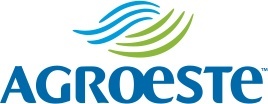
Be clear that you want them to be safe and that experimenting with substances is dangerous—even if it’s just one time. If you are not able to keep the line of communication open with your teen, talk to their healthcare provider. They can help connect you to resources and support you in taking more decisive action, like drug signs of drug use testing. If you believe that your loved one may be dealing with substance abuse or drug addiction, reaching out to them is the best way to start a conversation help. Substance abuse can be overcome, and the odds of long-term recovery increase when a person seeks help through a professionally trained recovery center.
Charitable Care & Financial Assistance
Substance users may have dilated pupils or glazed eyes, slurred speech, and ramble when they talk. They can show changes in movement patterns—depending on the type of substance involved, psychomotor retardation (heroin) or jumpiness (cocaine). Substances users often become so preoccupied with getting and using that they forego eating and suddenly lose weight. Another sign of addiction is a shift in sleep and wake patterns—sleeping too much or too little, or at unusual times. There isn’t a single test available to diagnose substance use disorder. Instead, healthcare providers rely on a thorough evaluation of your medical history and behaviors surrounding substance use.
- Facing your problem without minimizing the issue or making excuses can feel frightening and overwhelming, but recovery is within reach.
- It becomes a cycle — you seek out these experiences because they reward you with good feelings.
- Outpatient treatment is a less intensive program that usually involves fewer hours and days per week.
- Even a few episodes of substance misuse can lead to tolerance and dependence (addiction).
- Taking controlled substance prescriptions like opioids or benzodiazepines the wrong way can kill.
Symptoms and Causes
It is estimated that 80 percent of long-term heavy drinkers suffer from some degree of thiamine deficiency. Alcohol use is popular on social occasions, but it can be especially tricky to notice when social drinking slides into alcohol use disorder. It may be that a person consumes more drinks than usual in one sitting. Or a person might https://ecosoberhouse.com/ start consuming alcohol before a social event, or even early in the day. People developing problem use might look for socially acceptable reasons to have a drink, or they might start concealing their alcohol consumption from others around them. Use of hallucinogens can produce different signs and symptoms, depending on the drug.
Graduate School of Addiction Studies
- Common addictive substances include alcohol, tobacco (nicotine), stimulants, hallucinogens, and opioids.
- The teen and young adult years are confusing, complicated and formative.
- It’s like watching a juggler try to keep too many balls in the air—eventually, something’s got to give.
What looks like addiction could be an experimental phase or a form of stress management. But a real addiction, if left untreated, can develop into a debilitating habit or increased risk of illness. Controlled substances are drugs or medications that have the potential to be misused and have a high risk of leading to substance use disorder. Is your family member or friend using opioid medicines in a harmful way? It may not be easy to tell, especially in the early stages of addiction. Maybe you’ve seen changes in your loved one’s moods or behavior.
Protect Teens From Prescription Medications
- You may notice this person spraying areas such as their room or car, wearing very strong cologne or perfume, or even burning candles and incense to cover it.
- Pupils will be dilated, and they may have difficulty focusing if they’ve been drinking.
- Unusually clumsy to the point of stumbling into furniture and walls, tripping over their own feet and knocking things over?
It’s like the body is trying to compensate for the havoc addiction is wreaking on its systems. When taken as directed for a limited time, opioids are not likely to lead to addiction. But taking them for a long time and not following directions raises the risk of misuse and opioid use disorder. People with drug addictions continue to use drugs compulsively, despite the negative effects. One of the earliest warning signs of a developing problem is going through the medication at a faster-than-expected rate. In other cases, people start abusing medication not prescribed for them in order to experience a high, relieve tension, increase alertness, or improve concentration.
steps parents can take to curb teen drug use

For an adult, a divorce, loss of a job or death of a loved one may increase the risk of substance use. For a teenager, moving, family divorce or changing schools can increase their risk. It’s important to turn to healthy coping mechanisms during these times of change, like exercising, meditating or learning a new hobby. Consider seeing a mental health professional if you’re having difficulty managing stress. Addiction hinges on many factors, only some of which have to do with the properties of a drug.

Behaviors to Look Out For


Deixar Um Comentário